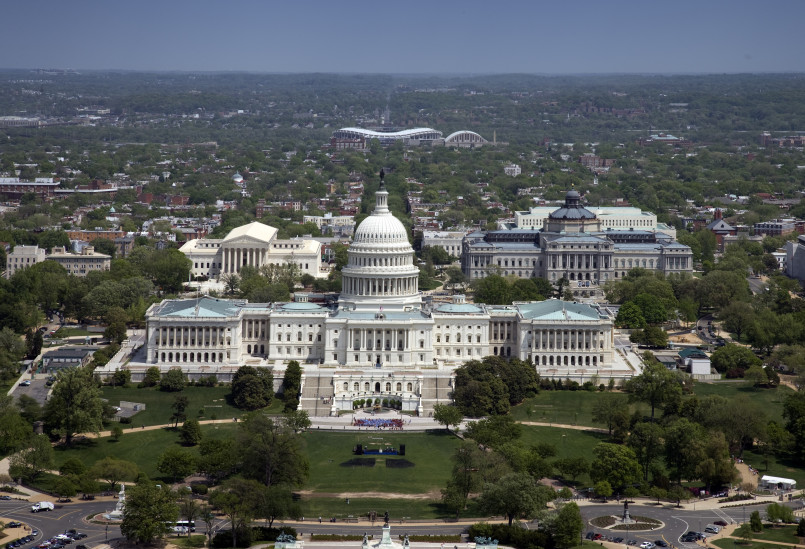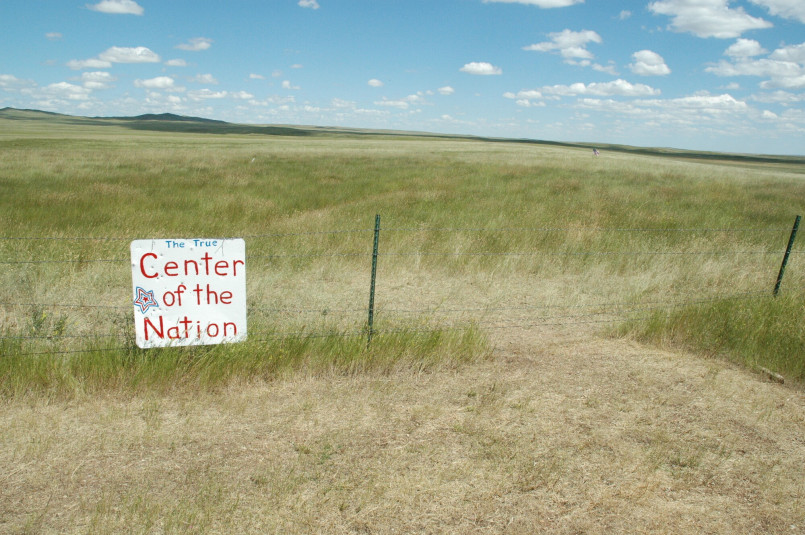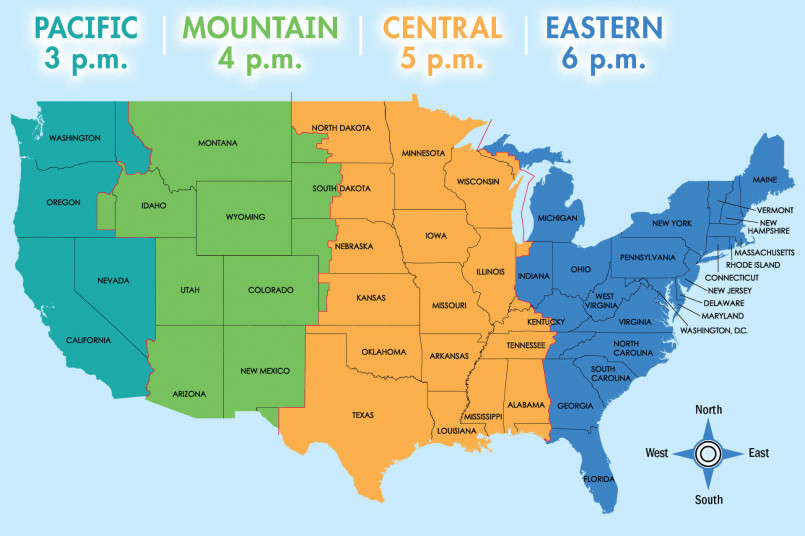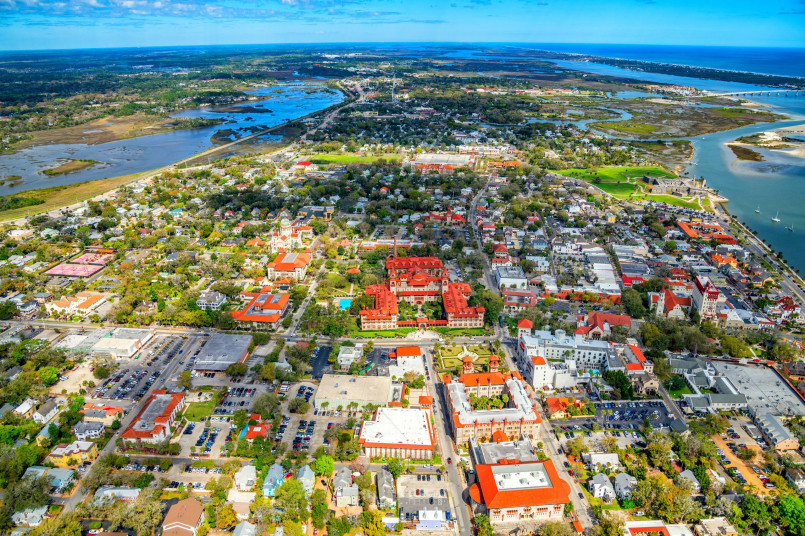From the unanimous election of George Washington to today's media-saturated campaigns, US presidential elections have undergone remarkable transformations. This article explores the pivotal moments, constitutional changes, and societal shifts that shaped how Americans choose their leader.
The American presidential election represents one of the most enduring democratic processes in world history. For over two centuries, this quadrennial ritual has determined who would lead the world's most powerful nation. Yet while the basic constitutional framework remains intact, the process through which Americans choose their president has undergone dramatic transformations that reflect broader changes in American society, technology, and political culture.
From the humble beginnings when only white male property owners could vote, to today's mass-media campaigns involving millions of diverse voters, presidential elections have evolved in ways the Founding Fathers could scarcely have imagined. This journey through electoral history reveals not just how Americans select their leaders, but how democracy itself has been continuously reinvented.
Early Elections: The Beginnings (1789-1800)
When George Washington was elected as the first president in 1789, the process looked nothing like modern elections. Washington ran unopposed and was chosen unanimously by the Electoral College. The Constitution had established only basic parameters, with electors from each state casting votes for president and vice president without distinguishing between the offices.
This system revealed its flaws in the election of 1800, when Thomas Jefferson and his running mate Aaron Burr received identical electoral votes, creating a constitutional crisis that was resolved only after 36 rounds of voting in the House of Representatives. This deadlock prompted the 12th Amendment in 1804, requiring separate balloting for president and vice president.
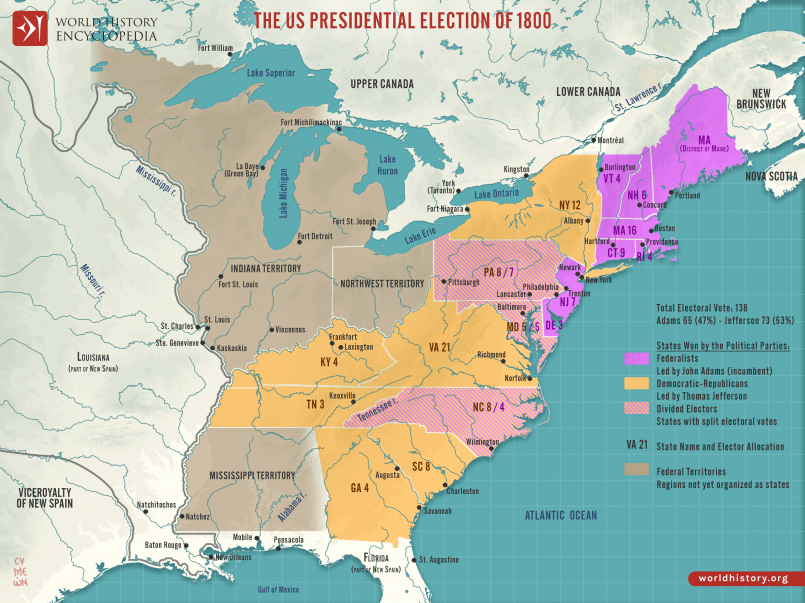
During this era, campaigning was considered undignified. Candidates did not give speeches or openly seek office. Instead, their supporters would advocate on their behalf while the candidates themselves maintained an appearance of reluctant public service-a stark contrast to today's aggressive campaign strategies.
The Rise of Political Parties
Despite George Washington's warnings against "factions" in his farewell address, political parties quickly became central to American elections. By the 1796 election, the Federalists and Democratic-Republicans had emerged, establishing the two-party framework that continues today, albeit with different parties.
The partisan press played a crucial role in early elections. Newspapers were explicitly aligned with political parties, printing scathing attacks on opponents that would make even today's negative campaigning seem mild. The election of 1828 between Andrew Jackson and John Quincy Adams featured particularly vicious personal attacks, with Jackson's wife Rachel being called an adulteress and Adams labeled a pimp.
By the 1830s, political parties had developed sophisticated organizational structures, including:
- National conventions to nominate candidates
- Party platforms outlining policies
- Local committees to mobilize voters
- Partisan newspapers to spread messaging
These innovations established patterns that would define American politics for generations to come.
The Electoral College: Evolution and Controversies
The Electoral College has been one of the most enduring yet controversial elements of presidential elections. Originally designed as a compromise between those who wanted Congress to select the president and those who favored direct popular election, the system has evolved significantly.
Initially, many states had their legislatures choose electors rather than allowing a popular vote. By the 1830s, most states had shifted to statewide popular vote for electors. The winner-take-all system that most states now use was not constitutionally mandated but emerged gradually as states sought to maximize their influence.
Electoral College Controversies
Five presidents have won the Electoral College while losing the popular vote:
- John Quincy Adams (1824)
- Rutherford B. Hayes (1876)
- Benjamin Harrison (1888)
- George W. Bush (2000)
- Donald Trump (2016)
The 2000 election was particularly contentious, with the outcome hinging on Florida's electoral votes and ultimately being decided by the Supreme Court in Bush v. Gore. These outcomes have periodically sparked calls for reform or abolition of the Electoral College, though constitutional amendment requirements make such changes difficult.
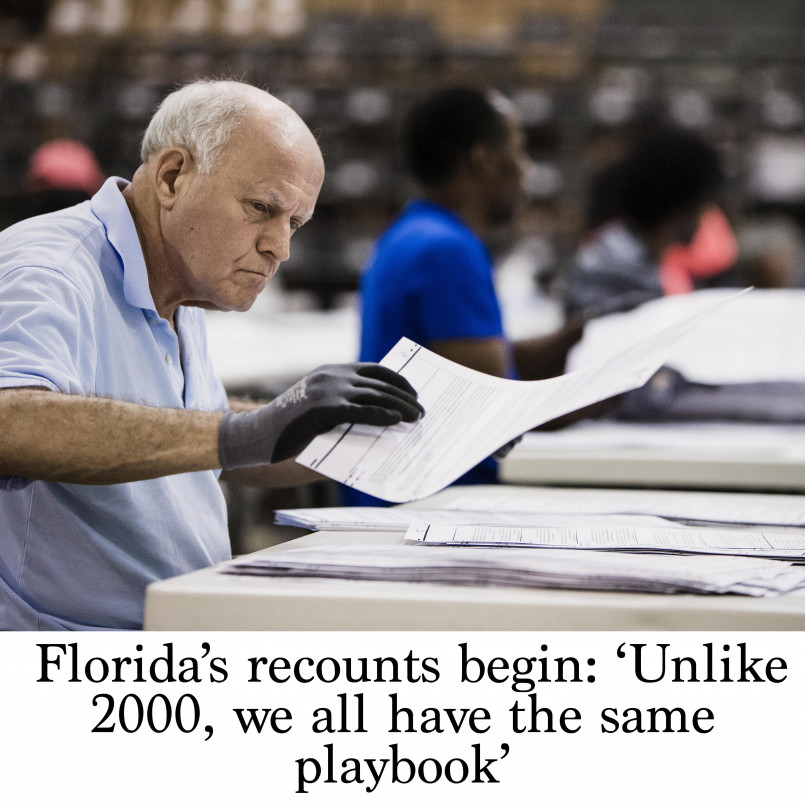
Expanding Suffrage: Who Gets to Vote
Perhaps no aspect of presidential elections has changed more dramatically than who is permitted to participate. The expansion of voting rights reflects America's ongoing struggle to live up to its democratic ideals.
In the early republic, voting was generally limited to white male property owners, who comprised approximately 6% of the population. Through a series of constitutional amendments and legislative actions, the franchise gradually expanded:
- 15th Amendment (1870): Prohibited denial of voting rights based on race
- 19th Amendment (1920): Granted women the right to vote
- 24th Amendment (1964): Banned poll taxes in federal elections
- Voting Rights Act (1965): Eliminated discriminatory voting practices
- 26th Amendment (1971): Lowered voting age to 18
Despite these expansions, voter participation has fluctuated significantly. The highest turnout in a presidential election occurred in 1876, when 81.8% of eligible voters participated. Modern turnouts typically range from 50-60%, though 2020 saw approximately 66% participation-the highest in a century.
The Evolution of Presidential Campaigns
Presidential campaigns have transformed from the dignified non-campaigns of the early republic to today's multi-billion-dollar operations. Several pivotal moments mark this evolution:
In 1896, William McKinley pioneered the "front-porch campaign," remaining at home while surrogates traveled on his behalf and supporters were brought to him. His opponent, William Jennings Bryan, took the opposite approach, covering 18,000 miles by train in the first truly national speaking tour by a presidential candidate.
The 20th century brought new campaign technologies and strategies:
- Radio transformed campaigns in the 1920s-40s, with FDR mastering the medium through his "fireside chats"
- Television became dominant from the 1960s, highlighted by the first televised debates between Kennedy and Nixon
- Professional polling and targeted messaging emerged in the mid-20th century
- Internet and social media campaigns began in the early 2000s, reaching maturity with Obama's 2008 digital strategy
Campaign financing has also evolved dramatically, from party-funded operations to the current system of individual donations, public financing options, and independent expenditures. The Citizens United Supreme Court decision in 2010 removed many restrictions on campaign spending, leading to the billion-dollar campaigns that characterize modern presidential elections.
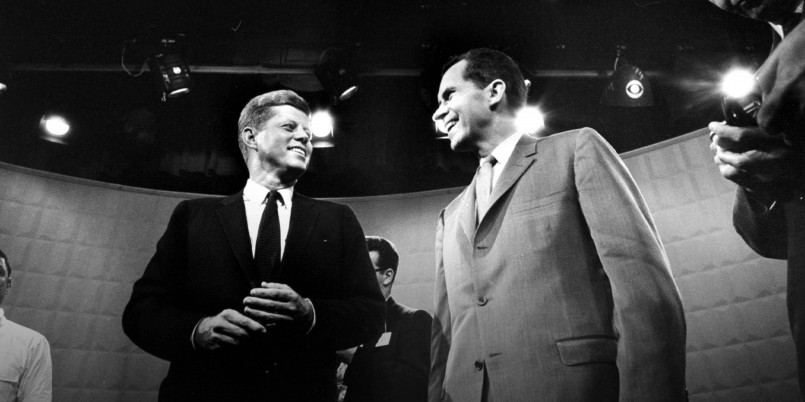
Media's Growing Influence on Elections
The relationship between media and presidential elections has grown increasingly complex and influential. Each technological innovation has transformed how candidates communicate with voters and how campaigns are covered.
Newspapers dominated early election coverage, often with explicit partisan biases. The advent of radio in the 1920s allowed candidates to speak directly to voters in their homes for the first time. Franklin Roosevelt's masterful radio presence helped him build public support for his policies during the Great Depression and World War II.
The first televised debate between Kennedy and Nixon in 1960 demonstrated television's power to shape voter perceptions. Those who listened on radio thought Nixon had won, while television viewers favored the more photogenic Kennedy. This began the era where image and visual presentation became crucial to campaign success.
Modern Media Environment
Today's fragmented media landscape presents new challenges and opportunities:
- 24-hour cable news networks provide continuous coverage but often emphasize conflict and controversy
- Social media allows candidates to communicate directly with supporters while bypassing traditional media filters
- Microtargeting lets campaigns deliver different messages to specific voter segments
- Disinformation and "fake news" have emerged as significant concerns
The 2008 Obama campaign pioneered effective use of social media for organizing and fundraising, while the 2016 Trump campaign demonstrated how earned media and direct communication via Twitter could overcome traditional campaign disadvantages.
Notable Election Moments That Changed History
Certain presidential elections stand out for their historical significance or for introducing innovations that changed how campaigns operate:
1800: The first peaceful transfer of power between opposing political parties when Jefferson succeeded Adams, establishing a crucial democratic precedent.
1828: Andrew Jackson's election marked the rise of populist politics and expanded democracy, with voting rights extended to most white men regardless of property ownership.
1860: Lincoln's election precipitated the Civil War and ultimately led to the abolition of slavery.
1876: The disputed Hayes-Tilden election resulted in the Compromise of 1877, which ended Reconstruction and had profound consequences for civil rights.
1932: Franklin Roosevelt's election during the Great Depression ushered in the New Deal and transformed the role of federal government.
1960: Kennedy's narrow victory over Nixon featured the first televised debates and highlighted the growing importance of media in campaigns.
1980: Reagan's decisive win over Carter represented a conservative realignment and changed the direction of American politics.
2008: Barack Obama's election as the first African American president marked a historic milestone in American race relations.
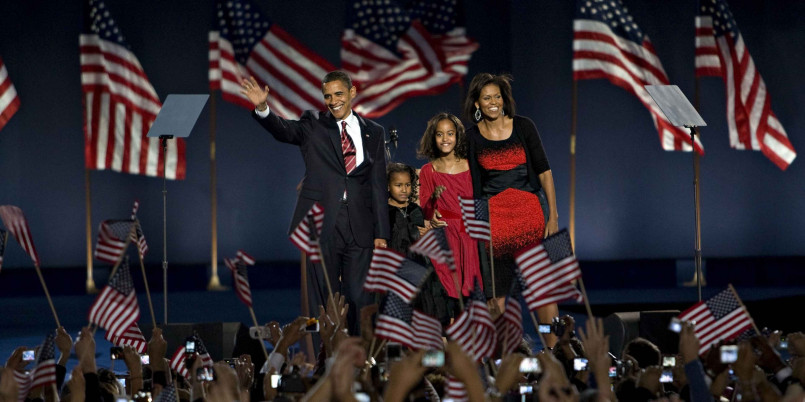
Each of these elections represented not just a change in leadership but significant shifts in American politics, society, or campaign practices.
The Role of Technology in Elections
Technological innovation has repeatedly transformed how Americans vote and how campaigns operate. Early elections used paper ballots that were often provided by the parties themselves, leading to concerns about privacy and fraud.
The secret ballot, also known as the Australian ballot, was introduced in the late 19th century, providing standardized ballots and private voting booths. Mechanical voting machines appeared in the early 20th century, followed by punch-card systems in the mid-century.
The controversy over Florida's punch-card "hanging chads" in the 2000 election accelerated the adoption of electronic voting systems. The Help America Vote Act of 2002 provided funding for states to update voting equipment, though concerns about electronic voting security have persisted.
Campaign Technology
Campaigns have eagerly adopted new technologies to identify, persuade, and mobilize voters:
- Database management systems to track voter information
- Predictive analytics to target likely supporters
- Digital advertising platforms for precision messaging
- Mobile apps for volunteer coordination
- Social media for fundraising and communication
The Obama campaigns of 2008 and 2012 were particularly innovative in their use of data analytics and digital organizing tools. By 2016 and 2020, sophisticated data operations had become standard for major campaigns, with microtargeting allowing messages tailored to specific voter segments based on their predicted concerns and values.
Major Electoral Reforms and Their Impact
Throughout American history, various reforms have attempted to address perceived flaws in the electoral system. Some of the most significant include:
The Progressive Era reforms (early 20th century) introduced primary elections, giving voters rather than party bosses the power to select nominees. This dramatically changed how candidates approached campaigns, needing to appeal directly to voters rather than party officials.
The Federal Election Campaign Act of 1971 and its 1974 amendments established the first comprehensive system for regulating campaign finance, including disclosure requirements and contribution limits. It also created the Federal Election Commission to enforce these rules.
The presidential primary system has evolved significantly. Before 1972, most delegates to national conventions were selected by party leaders. Reforms after the contentious 1968 Democratic convention dramatically expanded the use of binding primaries and caucuses, giving voters much more direct influence over nominations.
More recent reforms have focused on:
- Early voting and mail-in ballot expansion
- Automatic voter registration
- Independent redistricting commissions to address gerrymandering
- Ranked-choice voting experiments in some jurisdictions
The effectiveness of these reforms remains debated, with tensions between making voting more accessible and maintaining election security continuing to shape policy discussions.
Third-Party Candidates and Their Influence
While the two-party system has dominated American politics, third-party and independent candidates have occasionally played crucial roles in presidential elections. They have introduced new issues, influenced major party platforms, and sometimes determined election outcomes by drawing votes from major candidates.
Notable third-party campaigns include:
- 1912: Theodore Roosevelt's Progressive "Bull Moose" Party split the Republican vote, allowing Democrat Woodrow Wilson to win
- 1924: Robert La Follette's Progressive Party won 16.6% of the popular vote and carried Wisconsin
- 1948: Strom Thurmond's States' Rights Democratic (Dixiecrat) Party carried four Southern states
- 1968: George Wallace's American Independent Party won five Southern states and 13.5% of the popular vote
- 1992: Ross Perot received 18.9% of the popular vote, the strongest third-party showing since 1912
- 2000: Ralph Nader's Green Party candidacy likely affected the outcome in Florida, determining the national result

Third-party candidates face significant structural barriers, including ballot access challenges, exclusion from debates, and the "wasted vote" perception. Nevertheless, they have often introduced policy innovations later adopted by major parties and provided outlets for voter dissatisfaction with the two-party status quo.
Modern Elections: New Challenges and Patterns
Contemporary presidential elections have developed distinct characteristics that differentiate them from earlier eras. These include:
Polarization: Elections have become increasingly nationalized, with fewer voters splitting their tickets between parties and stronger partisan loyalty. Geographic polarization has intensified, with rural areas becoming more Republican and urban areas more Democratic.
Cost: Campaign spending has escalated dramatically. The 2020 election cycle cost an estimated $14 billion, more than twice the amount spent in 2016, with presidential campaigns alone accounting for billions.
Extended timeline: Presidential campaigns effectively begin years before Election Day. Candidates now announce their candidacies 18-24 months before the election, creating a nearly permanent campaign cycle.
Media fragmentation: Voters now consume information from a vast array of sources, many catering to specific ideological viewpoints. This has reduced shared national experiences and complicated campaign messaging.
Security concerns: Recent elections have highlighted vulnerabilities ranging from foreign interference to disinformation campaigns. Election security has become a major focus for federal and state officials.
Demographic changes continue to reshape the electorate, with growing racial and ethnic diversity and generational replacement creating new electoral dynamics. These shifts have accelerated discussions about the Electoral College, as population concentration in certain states affects the relationship between popular and electoral votes.
The Future of Presidential Elections
Looking ahead, several trends and potential changes may shape future presidential elections:
Voting methods: The COVID-19 pandemic accelerated the adoption of mail-in and early voting. Many states have made these options permanent, potentially changing campaign strategies and voter participation patterns.
Technology: Advances in artificial intelligence, virtual reality, and communication technologies will likely transform how campaigns operate and how voters experience elections. Concerns about deepfakes and synthetic media present new challenges for information integrity.
Electoral College reform: Proposals range from abolishing the Electoral College through constitutional amendment to workarounds like the National Popular Vote Interstate Compact, which would commit participating states to award their electoral votes to the national popular vote winner.
Demographic shifts: Continuing changes in population distribution, age structure, and racial/ethnic composition will reshape the electorate and potentially alter traditional electoral maps and coalition-building strategies.
The resilience of American electoral institutions has been tested throughout history. As new challenges emerge, the system will continue to evolve, balancing tradition with innovation, security with accessibility, and stability with responsiveness to changing public needs.
Whatever changes occur, presidential elections will likely remain the most prominent expression of American democracy-a complex, flawed, yet enduring process through which citizens determine who will lead the nation.
Frequently Asked Questions About The Evolution of US Presidential Elections: 12 Major Turning Points
How has voter eligibility changed throughout US presidential election history?
Voter eligibility has expanded dramatically. Initially, only white male property owners (about 6% of the population) could vote. The 15th Amendment (1870) prohibited racial voting restrictions, the 19th Amendment (1920) granted women's suffrage, the 24th Amendment (1964) banned poll taxes, and the 26th Amendment (1971) lowered the voting age to 18. The Voting Rights Act of 1965 provided federal enforcement of voting rights for minorities.
What was the most significant technological change in presidential elections?
While many technological changes have been important, television's introduction in the 1960 Kennedy-Nixon debates fundamentally transformed elections. For the first time, voters could visually evaluate candidates in their living rooms, shifting emphasis from policy to personality and appearance. This began the modern media-centric campaign era and established television as the dominant campaign medium for decades until the rise of the internet and social media.
Why does the United States use the Electoral College instead of direct popular vote?
The Electoral College was a compromise at the Constitutional Convention between those who wanted Congress to select the president and those favoring direct popular election. It gave smaller states more influence than their population alone would provide, addressed concerns about regional candidates dominating, and accommodated the complicated logistics of conducting a nationwide vote in the 18th century when communication and travel were limited.
When did presidential primaries become important in the nomination process?
Presidential primaries gained their modern significance after the contentious 1968 Democratic convention. Reforms implemented for the 1972 election cycle dramatically expanded the use of binding primaries and reduced the power of party leaders in selecting nominees. Before this, candidates were often selected by party leaders in what were called "smoke-filled rooms," with primaries playing a minor advisory role.
Which presidential election had the closest result?
The 2000 election between George W. Bush and Al Gore was extraordinarily close, ultimately decided by 537 votes in Florida after a contentious recount process and Supreme Court case. Other notably close elections include 1876 (Hayes-Tilden), which was resolved through a special electoral commission, and 1960 (Kennedy-Nixon), where several states had margins of less than 1%.
How have campaign finance rules changed over time?
Campaign finance regulation began in earnest with the Federal Election Campaign Act of 1971, which established disclosure requirements and contribution limits. The post-Watergate amendments in 1974 created the Federal Election Commission and public financing system. The Bipartisan Campaign Reform Act of 2002 (McCain-Feingold) restricted "soft money." The landscape changed dramatically with the Supreme Court's Citizens United decision in 2010, which removed many restrictions on independent expenditures.
What impact have third parties had on presidential elections?
Third parties have occasionally played decisive roles. Theodore Roosevelt's 1912 Bull Moose campaign split the Republican vote, allowing Woodrow Wilson to win. In 1992, Ross Perot won 19% of the popular vote, potentially affecting Bush-Clinton results. In 2000, Ralph Nader's Green Party candidacy likely drew enough votes from Al Gore in Florida to give George W. Bush the presidency. Third parties have also introduced policy innovations later adopted by major parties.
How has the length of presidential campaigns changed?
Presidential campaigns have grown dramatically longer. In the 19th century, active campaigning might last only a few months. By the mid-20th century, campaigns typically began about a year before Election Day. Today, candidates often announce their candidacies 18-24 months before the election, with exploratory committees forming even earlier, creating an almost permanent campaign cycle.

